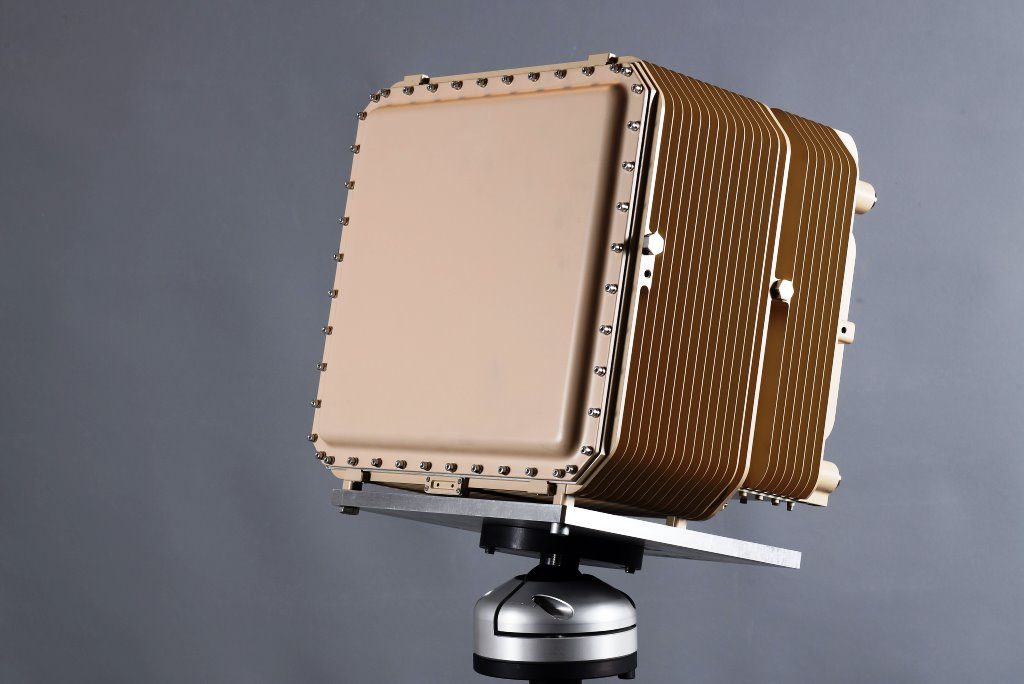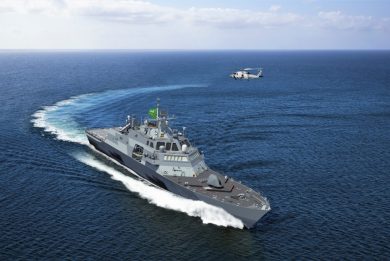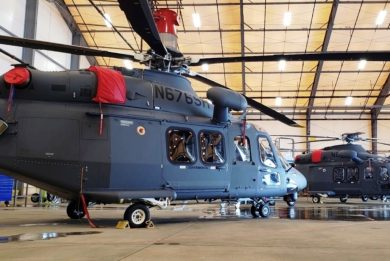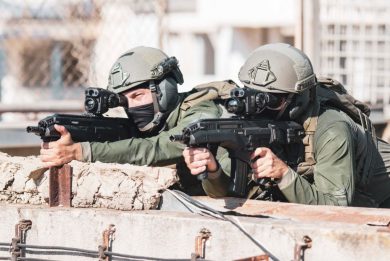
Leonardo unveils the TMMR multi-mission tactical radar
Leonardo presents for the first time at Eurosatory 2022 its new TMMR (Tactical Multi Mission Radar) small and lightweight multi-mission radar for tactical use. According to Leonardo the system has already a launch customer, which remains undisclosed. The first series production TMMR is in the testing trials phase.
The development of the TMMR originates from the need to have a sensor for tactical applications that was truly multi-mission and answered very challenging specifications in terms of dimensions, weight, energy consumption and costs. The goal, according to Leonardo, was to target national and international opportunities related to very short range air defence systems (V-SHORAD), Counter-Unmanned Air Systems (C-UAS), vehicular protection, surveillance and control of land and coastal areas and borders, as well that of high value sites such as airports and critical infrastructures, all characterized by challenging requirements in terms of performance and mobility.
To satisfy the latter, Leonardo developed a multi-domain sensor that represents an ‘all-in-one’ solution consisting of a fully digital and software defined radar in C-band with antenna, processing and electronics in a single module with reduced dimensions, weight and consumptions which, exploiting the most advanced technologies in the radar sector and modular concept, can be used as a single module or several together to ensure complete coverage of the vehicle or site to be protected.
The TMMR features the latest generation applied micro-electronics, a fully digital Active Electronically Scanned Array (AESA) architecture with direct sampling of Radio Frequency (RF) signals which uses high efficiency GaN (Gallium Nitride) transmitter receiver modules developed and produced in-house by Leonardo and ‘on-chip’ signal processing all packed in a single sealed panel. This architecture allows digital beam forming (DBF) and maximum flexibility in the use of beams as well as automatic classification of airborne targets, in particular those of smaller dimensions such as mini and micro drones, as well as artillery, mortar and rocket shells, in addition to land and naval targets of various types with azimuth coverage up to 90 ° for each module and up to 90 ° in elevation. According to Leonardo, the system has a detection range of over 7 km against micro drones, over 25 km against modern combat aircraft and over 20 km against vehicles without specifying the overall radar cross section of these targets.
Using passive air cooling without moving physical parts, the system guarantees extremely high reliability, even in the most difficult environments and in the presence of strong winds, dust and rain, declared Leonardo.
With a width, height and depth of respectively 41, 38 and 26 centimetres, and a weight of approximately 40 kg, each panel is a complete radar that only needs power (standard 28 VDC vehicular) and LAN cable to share tracks and commands. This solution allows high installation modularity with the possibility of interconnecting up to four modules together to ensure 360 ° coverage where the different modules automatically configure themselves in the master/slave mode, in order to offer the C2 a single ‘picture’ system downstream of the data fusion between the various modules. The display of information can be achieved with a laptop.
The small size as well as the limited weight makes the system particularly mobile and able to be transported and operated on a tripod by a team of two soldiers.
As anticipated, the system has completed development and is qualified, as well as in series production, of which the first is in the testing trials phase.
Photo courtesy Leonardo



